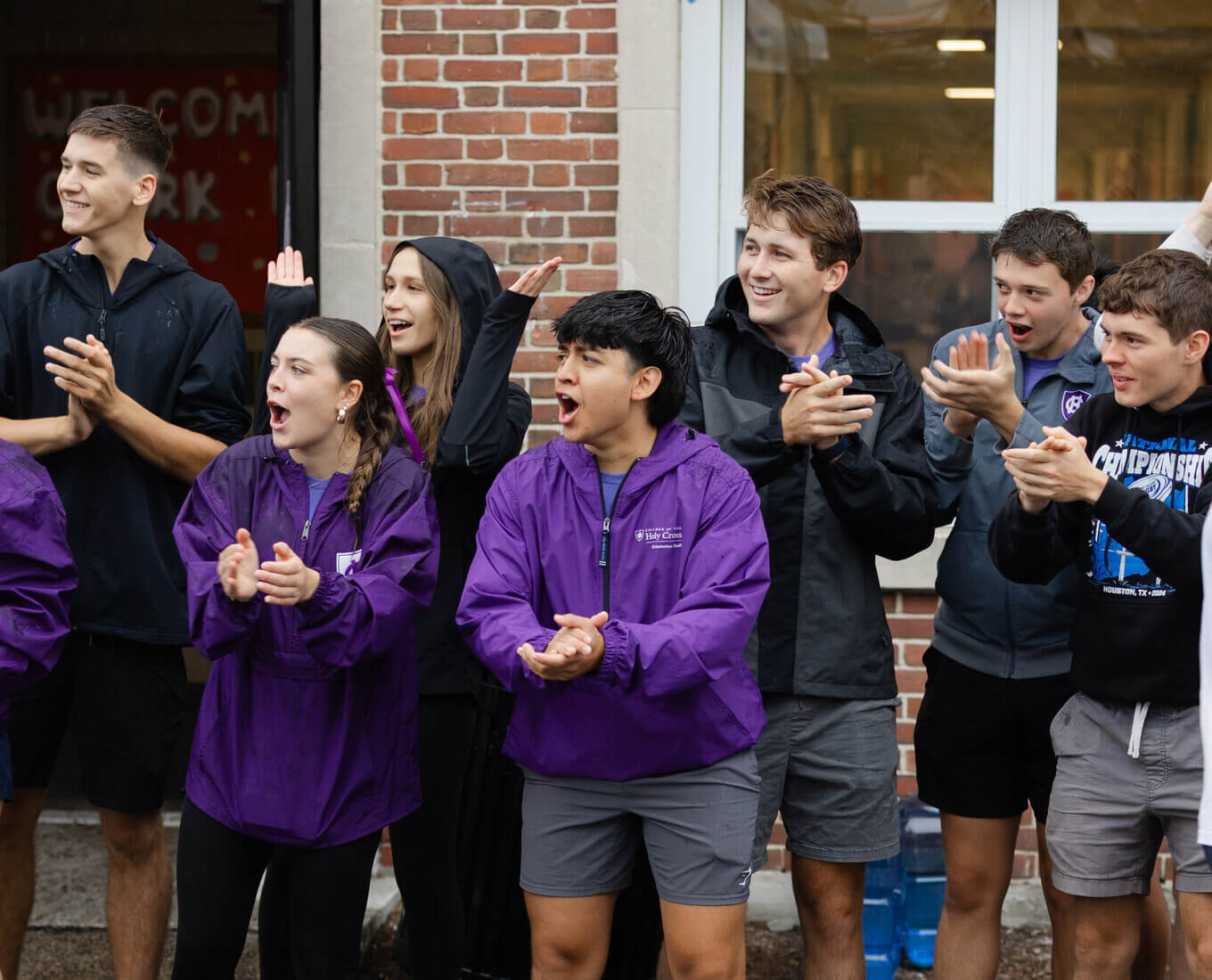 From ammunition in the Chapel to a deeply rooted Boston College-Holy Cross football feud, Holy Cross’ character is predicated on its rich historical tradition dating back to its founding in 1843. Rev. Anthony J. Kuzniewski, S.J., author of Thy Honored Name: A History of the College of the Holy Cross, 1843-1994, sat down with us to share little-known and forgotten facts about Mount St. James.
From ammunition in the Chapel to a deeply rooted Boston College-Holy Cross football feud, Holy Cross’ character is predicated on its rich historical tradition dating back to its founding in 1843. Rev. Anthony J. Kuzniewski, S.J., author of Thy Honored Name: A History of the College of the Holy Cross, 1843-1994, sat down with us to share little-known and forgotten facts about Mount St. James.
1. St. Joseph Memorial Chapel was used to house weaponry and accommodate soldiers during World War II. By mid-September 1941, campus-wide preparations for World War II were in place. Most notably, “an antiaircraft gun was in place in the basement of the chapel, which had been transformed into an armory and a drill area for use in inclement weather.” Other adjustments included using Campion House and Fenwick Hall as dormitories, a flagpole with signal arms near Wheeler Hall, and a rifle range in lower Carlin Hall. A full quota of students enrolled in NROTC, complete with a drum and bugle corps, a drill team, and Salvo, an informal mimeographed newsletter.
2. The highly valued Ratio Studiorum, or “Plan of Studies,” was embodied in Rev. George Fenwick, S.J. Fr. Fenwick, assigned to Holy Cross in its earliest years as an effort by the Jesuit authorities to please the bishop, was gifted with the ability to form personal, hearty and spiritual relationships with his students. Students often confided in him, played checkers with him, and nicknamed him “Dad” Fenwick, a classic example of the mentoring relationship between students and professors that the Ratio attempted to promote.
3. Both Boston College and Holy Cross claim a victory to the 1896 football game. In the only disputed game in Holy Cross’ history, its athletic rivalry with Boston College erupted with a dispute concerning a 4-point touchdown. While Boston College declared the score 8-6, Holy Cross asserted its 6-4 victory, and stated “in consequence of Boston College uniform dishonest and ungentlemanly conduct — Holy Cross will not, either in Foot or Base, Ball again contend with Boston College.”
4. The last American officer to die in World War I was a Holy Cross alumnus. Ninety minutes prior to the hoisting of a celebratory American flag at war’s end, Rev. William Davitt was killed by the last shell fired by the Germans in that part of the front. His death inspired the construction of the Chapel, which was first built as a memorial to Davitt and then later to all of Holy Cross’ war dead. Davitt’s name heads the list on the commemorative wooden tablets hanging in the Chapel.
5. Not all Jesuits living at Holy Cross work at the College. On a more contemporary note, a few Jesuits residing at the institution work off campus. Rev. Terrence Curry, S.J., is a chaplain at St. Vincent Hospital, where he is responsible for a general surgery unit. Rev. Thomas Sheehan, S.J., a recent addition to campus, serves as a chaplain at UMass Memorial.
By Claire Luke ’10
Related Information:
• Jesuit Heritage Week
5 Things You Don’t Know About Holy Cross
Read Time
2 Minutes
